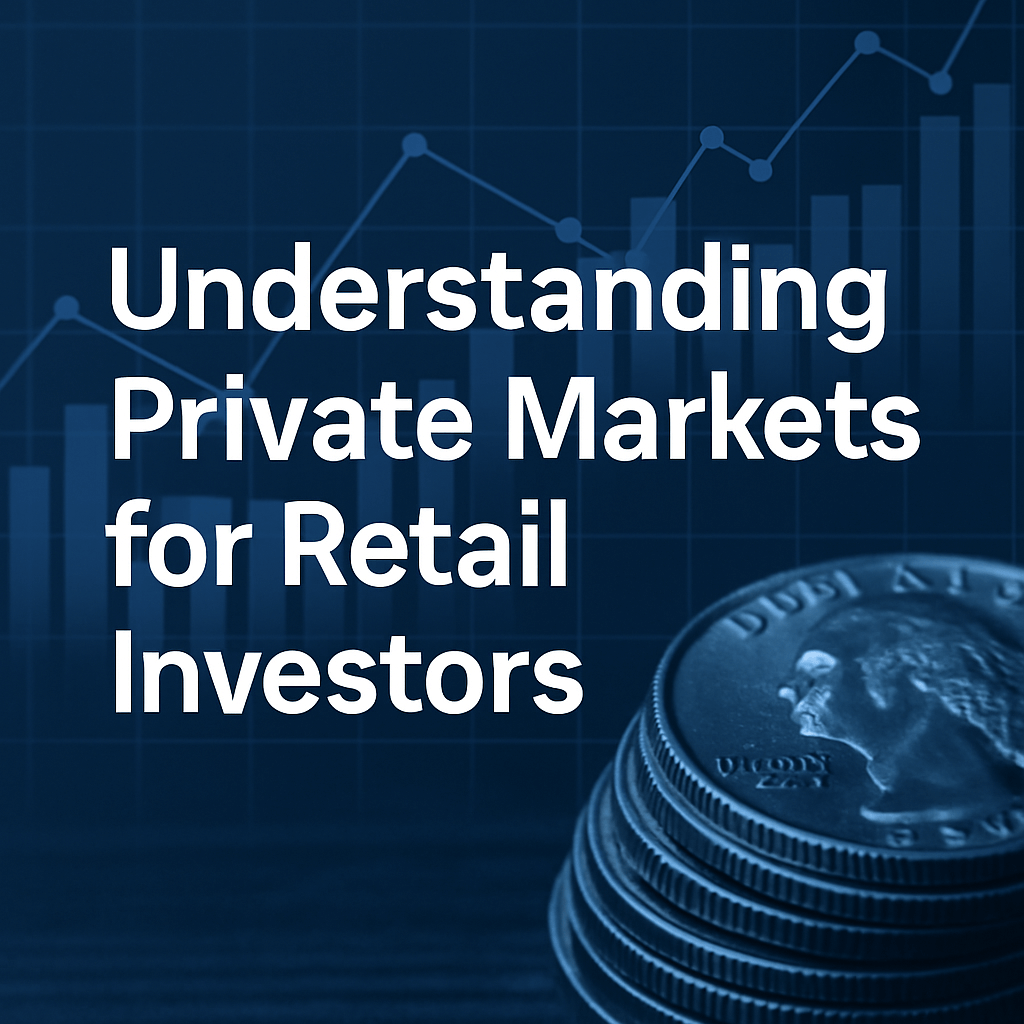Understanding Private Markets for Retail Investors

In May 2024, Securities and Exchange Commission Chairman Paul Atkins formally requested a review of two-decade-old private-fund rules under Regulation D. These regulations—designed in 2001 to limit participation in private offerings to accredited investors and impose a minimum $25,000 investment threshold—were intended to shield less sophisticated individuals from undue risk. However, with private markets swelling from $11.6 trillion in 2014 to over $32 trillion by mid-2024, Atkins asserts the time has come to broaden access for everyday investors.
Background on Accredited Investor Rules
Under current SEC Rule 501(a), an accredited investor must have a net worth exceeding $1 million (excluding primary residence) or an annual income above $200,000. Regulation D’s Rule 506(b) and 506(c) then permit private placements only to such individuals. While these thresholds limit exposure to illiquid, non-transparent investments, they also restrict broader capital participation in high-growth private companies and alternative strategies.
Emerging Regulatory Proposals and Outlook
- Reg D Modernization: The SEC’s spring 2024 concept release seeks public comment on easing accredited-investor definitions and increasing offering size caps.
- 401(k) Inclusion: The U.S. Treasury is reportedly evaluating an executive order to allow private equity and private credit in defined-contribution plans—potentially unlocking $12.7 trillion in retirement assets.
- SEC Feedback Loop: Comments on proposed amendments are due by August 2024, with final rulemaking anticipated in late 2024 or early 2025.
401(k) Plans and Retirement Accounts
Major plan providers, including Empower (managing $1.8 trillion for 19 million participants), Fidelity, and Vanguard, have formed partnerships with alternative managers such as Apollo Global Management and Blackstone. Through customized target-date and interval funds, they are introducing allocations to private credit, private equity, and real estate. According to private credit platform Percent, IRA inflows into private debt products surged by 165% over the past two years.
Technical Insights: Valuations and Liquidity Mechanisms
Private-market valuations are typically calculated via quarterly net asset value (NAV) models, relying on appraisals, recent deal comps, or discounted cash-flow analyses. This periodic mark-to-model approach can result in stale or lagging price discovery compared to daily mark-to-market public equities. To address this, Accelex and other AI-powered data platforms apply machine-learning algorithms to synthesize multi-source inputs—financial statements, sector comparables, macro indicators—providing intraday fair-value estimates with up to 95% predictive accuracy based on back-testing.
Due Diligence and Risk Assessment
- Track Record Analysis: Evaluate the general partner’s (GP) historical IRR, DPI (distributions to paid-in capital), and TVPI (total value to paid-in capital).
- Fee Structures: Understand the management fee (typically 1.5%–2%) and carried interest (20%–30%), including hurdle rates and catch-up provisions.
- Lock-up Terms: Many funds require capital commitments for 7–10 years; secondary market liquidity may exist but at a substantial discount.
- Governance and Transparency: Review limited partnership agreements (LPAs), audit frequency, and reporting cadence for portfolio valuations and valuations methodologies.
“Even seasoned institutional investors struggle to obtain clear valuations and data visibility to make informed decisions,” notes Simon Tang, U.S. director at private markets AI firm Accelex. “Retail investors must be especially diligent to avoid hidden risks.”
Emerging Trends: Tokenization and Blockchain-Based Access
Tokenization platforms such as Securitize and tZERO are pioneering the use of security tokens to fractionalize private assets—allowing investors to buy and trade digital shares on regulated blockchain networks. Pilot programs in Delaware and Wyoming’s special purpose depository institutions (SPDIs) have demonstrated intra-day redemption windows and reduced lock-ups. Smart contracts automate distributions and compliance, potentially lowering administrative overhead by up to 30%.
Advanced Technical Specifications: Liquidity and Valuation Models
- AMLF (Advanced Mark-to-Liquidity Framework): A proposed model using stochastic discount factors to simulate intra-period liquidity events.
- Blockchain-Enabled Waterfall Calculations: Smart-contract algorithms trace cash flows through tiered distributions, ensuring automated hurdle-rate compliance.
- AI-Driven Risk Scoring: Machine-learning risk models ingest alternative data sources—satellite imagery, ESG scores, credit spreads—to calibrate probability of default and potential write-downs.
Conclusion
Private markets can offer compelling diversification and return potential, particularly as public indices become concentrated in mega-caps. However, increased complexity, illiquidity, and higher fee structures demand robust due diligence, clear valuation processes, and alignment of interests between GPs and limited partners. Retail investors should weigh these factors against their time horizon and risk tolerance, leveraging emerging tools—AI analytics, blockchain tokenization, and regulated interval funds—to navigate this rapidly evolving landscape.